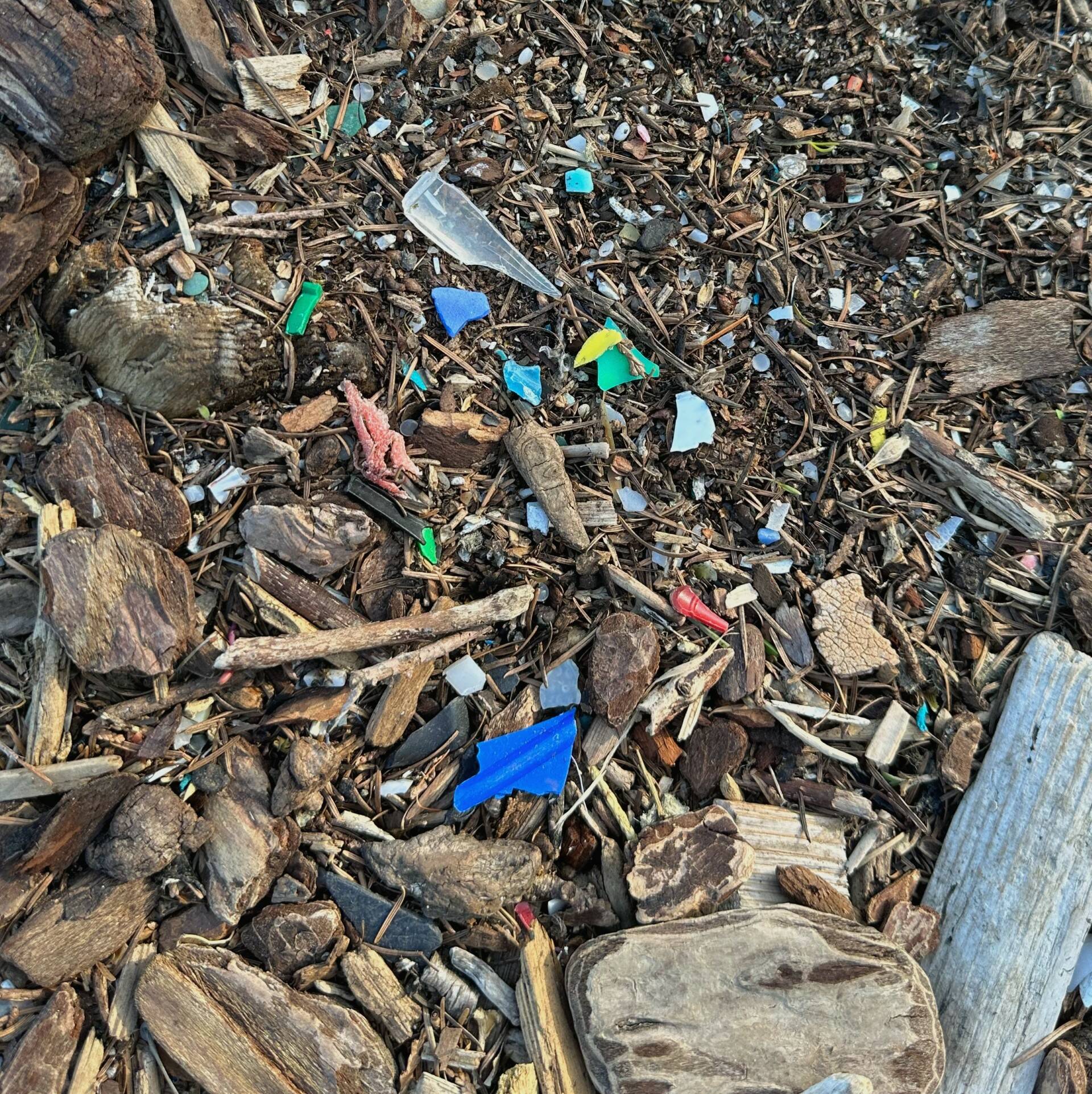Waterfront Park is a landmark for Eastsound.
It also has more microplastics than any other beach on Orcas.
“Many islanders might not even be aware of the amount of plastic on this beach, and our goal is to educate and address the problem,” said Madison West, event coordinator for the Zero Waste Committee at the Exchange. “We hope to inspire the community to use plastic-free alternatives in their everyday lives and to take some plastic off the beach each time they’re there enjoying the beauty.”
“Plastic Not Fantastic: Beach Clean Up” is scheduled for Saturday, May 25 from 11-1 p.m. at the Eastsound Waterfront Park. This is the first event in a series of four over the summer. Due to its shape, studies have shown that the level of microplastics found at this particular beach is exponentially higher compared to other Orcas Island shorelines.
Organizers estimate it will take multiple clean-up sessions to scratch the surface of the microplastic accumulation at Waterfront Park.
Plastic debris can come in all shapes and sizes but those less than five millimeters in length are called microplastics. The most common are microfibers from synthetic fabric. A single laundry load can release several million microfibers into the environment.
According to PBS, “Microplastics are turning up everywhere, from remote mountain tops to deep ocean trenches. They also are in many animals, including humans.”
Unlike other materials, plastic doesn’t break down into harmless molecules. It can take thousands of years for it to decompose.
“Microplastics end up in your body. They are toxic, they are made from oil and now everyone has levels of plastic in their bodies,” said Asifa Pasin, one of the co-founders of the Zero Waste committee. “The longer water and food sit next to that, it is getting in there.”
“Secondary microplastics” are particles that come from the breakdown of larger plastic items, like water bottles, caused by exposure to the sun and ocean waves.
“Even if you don’t think you are looking at microplastics, it’s down there in the rocks and driftwood,” explained Pasin. “There are piles of it. It may not look like much but it takes a toll on our environment. Knowledge is power, and we need to be conscious of it.”



